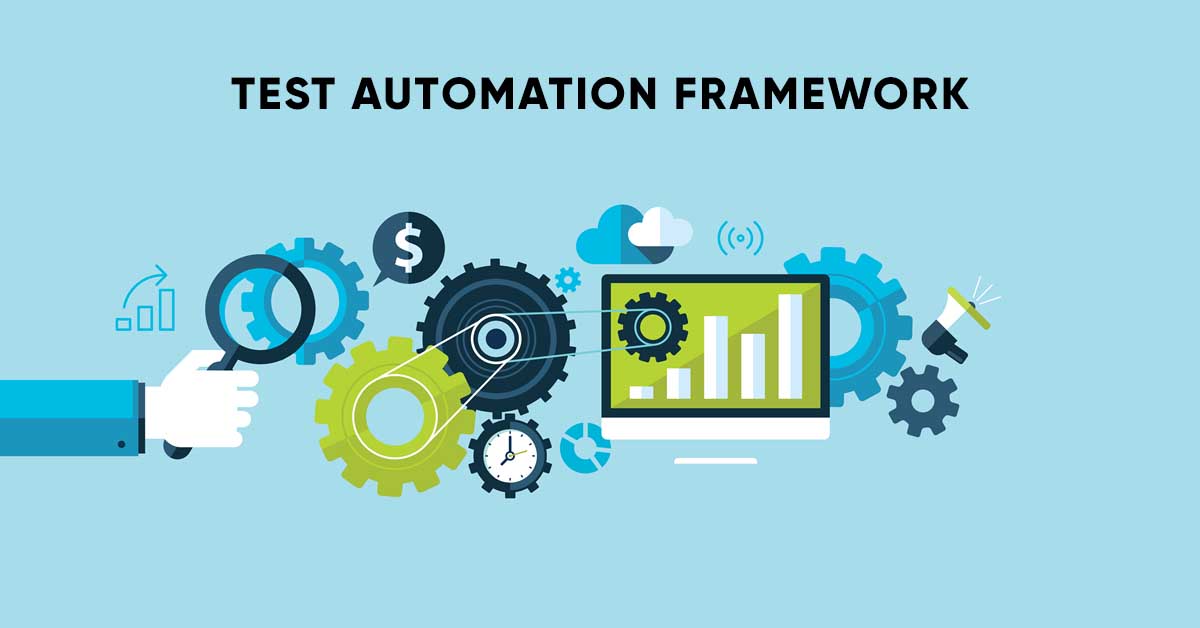Are you still executing your quality assurance test cases manually? If yes is your answer, you are massively falling behind, considering the rising complexity of the applications and the increasing needs of your end users. The most effective solution to this problem is the introduction of automated QA testing with automation frameworks like Selenium. Now, if you are a new tester, it is very likely that you do not know what is Selenium.
What Is A Test Automation Framework?
Since we’re targeting this article to all the new testers who are slowly starting to implement automation testing, it is only fair that we start our discussion with what an automation testing framework is in the first place. It is a structured set of guidelines, tools, and practices that can support the testing process of modern software.
The main intention of this software is to create coding standards, repository structures, data handling protocols, and reusable libraries that can make writing automation test scripts and executing them more efficient, consistent, and scalable.
If we had to further simplify the explanation process, we would say that it is almost like scaffolding, which supports the test development and execution process. The aim of this step is to offer a more reliable path, starting all the way from planning and going through the execution and reporting phases.
Why Is It The Cornerstone of Web QA
A robust automation testing framework is very important to create a successful quality assurance testing strategy. Now, if you’re still not sold on why it is the cornerstone of modern web QA, let us divert our attention towards some of the points that justify this claim:
- It helps implement testing consistency as you will be able to standardize the test development process. It can also help to create readable and maintainable test scripts that can be understood by even the non-technical members of your software development team.
- An automation framework also has a very important role in improving the reusability of the test cases. This is because common functions like log in and form submissions can be abstracted and reused for future test cases as well.
- You can also improve the scalability of the testing infrastructure by implementing this framework. This is because these frameworks will allow your teams to grow the test suites and also parallelize the test execution process. This means that you can run multiple test cases on different configurations at the same time.
- With the implementation of an automation testing framework, you can ensure integration readiness as it can support continuous integration and continuous deployment pipelines. These will also be great options for implementing DevOps pipelines and collaboration between multiple teams of the organization.
- Lastly, these frameworks have a very important role in improving the speed and accuracy of the test cases. This is because by automating the regression and repetitive tasks, you can ensure quicker release of your applications with fewer defects.
Major Components Of A Test Automation Framework
If you’re using a comprehensive automation testing framework, it will have multiple components to help you at different stages of the testing process. To shed more light on this segment, we have mentioned some of the major components required below:
- Firstly, you’d require reusable components or functions that can be shared across multiple test scripts. These components can include utilities for user interface interactions, API calls or file filtering. In most cases, these are stored within test libraries accessible through the environment.
- You will require mechanisms to handle different types of input data for performing efficient test data management. In most cases, these are performed using formats like JSON, CSV, Excel, or databases. You should also have to pay proper attention to ensure that these help support data-driven testing.
- You will require automated test scripts to actually run the test cases. These are automated code that can execute scenarios created using various frameworks like Selenium, Appium, and Cypress. In most cases, the automated test scripts are structured according to the framework rules that you have already implemented.
- The driver scripts will be responsible for controlling the test execution process by invoking libraries, test data, and assertions. It also has a very important role in ensuring that all the test cases are executed in the responsible components of the application.
- You would also require dedicated reporting tools like Allure or Exchange Reports. These tools will help capture results, logs, screenshots, and metrics to ensure that you are capturing all the performance-related data when the tests are actually being run.
- You will also require proper configuration management systems to manage the environment setups, like testing, staging, and production. You all also require comprehensive configuration files and environment variables to ensure that these setups are properly configured.
- Finally, you will require integration hooks to support integrating with continuous integration and continuous deployment tools. To perform this process, you can consider options like Jenkins and GitHub Actions. You will also require version control tools like Git and defect tracking systems like Jira to ensure proper test data and execution management.
How To Implement An Automation Testing Framework?
Excited to use an automation testing framework to help you with the implementation process, we have provided a step-by-step guide below:
- The first step is to define the goals and scopes by identifying what needs to be automated, like UI tests, regression tests, and integration. It is also important to understand all the stakeholders to grasp the required information and insights that you will require to create the plan for this process.
- The second step is to choose the right tools, which will align with the existing technical capabilities and the expertise of your development team. Some of the important factors that you must consider while choosing the tools include scalability, browser or device support, along continuous deployment and integration capabilities.
- After this, you have to design the framework architecture by picking a framework type, which can be modular, data-driven, behavior-driven development, or a hybrid one. You also have to define the folder structure, naming conventions, and coding guidelines that will be used throughout the testing implementation process.
- Finished designing the framework architecture? Now build the libraries for common actions like login, navigation, and validation, so that you can use the existing code in future testing scenarios. You also have to create utility functions like reading and writing for Excel and capturing screenshots.
- Now you’re finally prepared to set up the test data strategy by choosing the format to store the data sets and also by ensuring data security and manageability. If you’re using any form of customer information to test the application, you need to be extra safe in that regard.
- Now, you can move on to configuring the reporting and logging feature by integrating real-time logging and failure snapshots. You can also use dashboards for metric evaluations and generating detailed reports.
- The next step is to integrate with continuous integration and continuous deployment pipelines by triggering test runs on pull requests, merges, or scheduled jobs. It is also important to generate and share the reports automatically to all the required team members and stakeholders.
- The final step in this process is to maintain and perform version control by refactoring the steps regularly. You can also store it in Git with proper branching strategies and PR reviews.
The Best Practices To Use An Automation Testing Framework
Finally, we would like to draw your attention to some of the best practices that we advise you to implement while using an automation testing framework in your environment:
- Maintain Test Readability: We would always advise you to write clear and conscious code with proper abstraction and separation of concerns. This will play a major role in maintaining the readability and modularity of the testing infrastructure and the test cases.
- Use Cloud Testing: While using Selenium to run the test cases, it is very important to execute them on real devices to understand how the physical parameters of a device can impact the functioning of your applications. However, due to the increasing costs and hassle, many testers often completely skip this process.
But a better alternative would be to use cloud-based testing platforms like LambdaTest to run these test cases on real devices, browsers, and operating systems through remote servers.
Now, if you are a new tester who does not know what is Selenium or what Selenium ChromeDriver is, there is a very high possibility that you do not know about these platforms as well. LambdaTest, with its KaneAI and Agent-to-Agent testing capabilities, works for you like an AI agent for QA testing, letting you perform manual and automation testing at scale with over 3000+ browsers, OS combinations, and 10,000+ real devices.
- Avoid UI Dependency for All Tests: While you are running the automated test cases, it is very important to use APIs wherever possible or services for back-end validation. This will ensure that the tests are not dependent on the user interface elements or other visual components of the application.
It is also very important to keep all the test cases independent so that the functioning error or fault in one test case does not impact the functioning of all the others. After running all the tests individually, it is equally important to perform integration testing to verify how the test cases perform when all of them are combined.
The Bottom Line
Based on all the areas that we discussed and went through in this article, we can safely come to the final stance that an automation framework is not only a technical asset but also a strong backbone of the modern web quality assurance testing process. This is because it will allow your teams to deliver quality applications at speed, create collaboration, and future-proof the entire testing strategy.
So, whether you are a small or individual tester who does not even know what is Selenium or a seasoned developer who is making the switch, this article will help you understand your starting point and take the first step towards achieving the best automated testing setup to ensure proper QA test cases.

